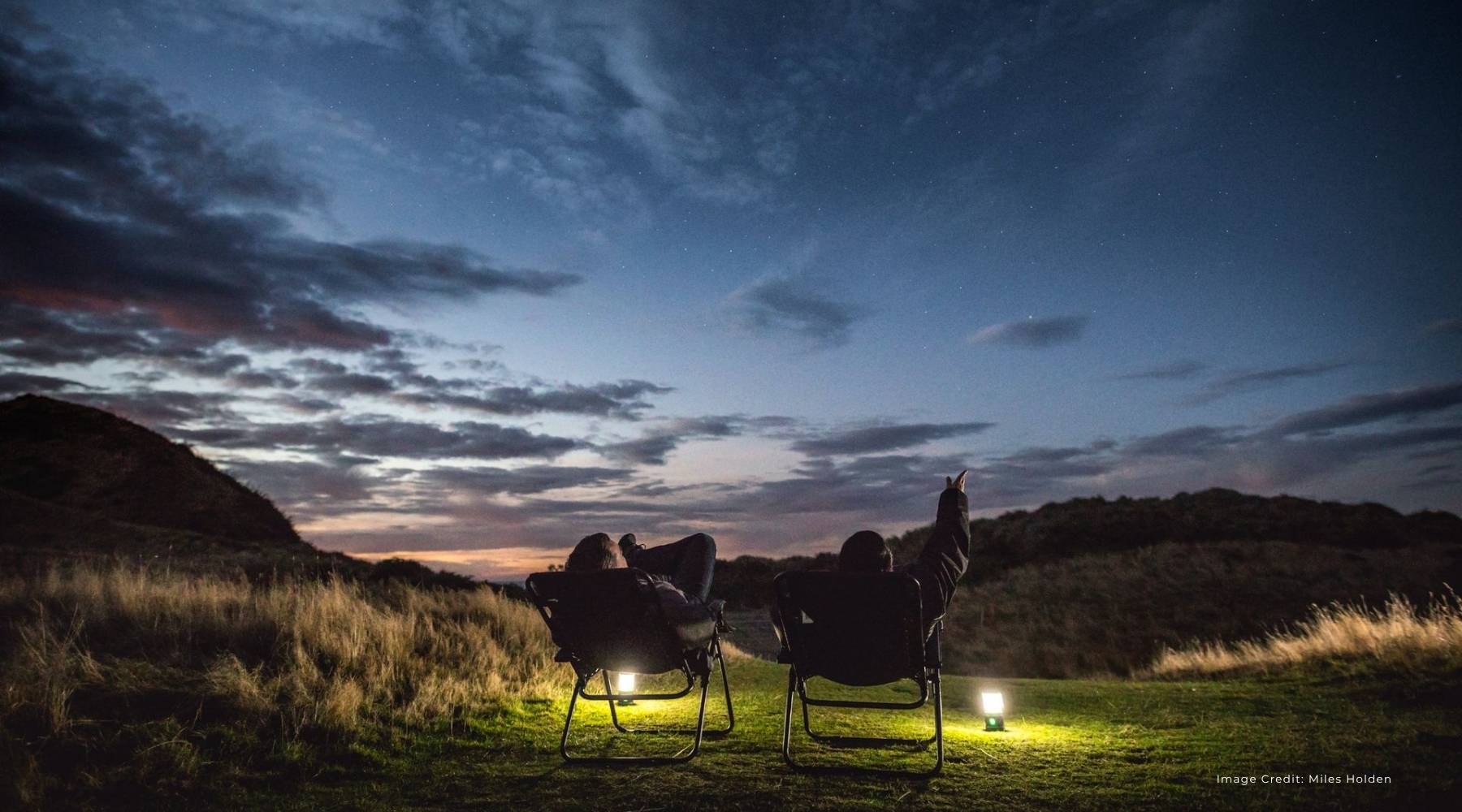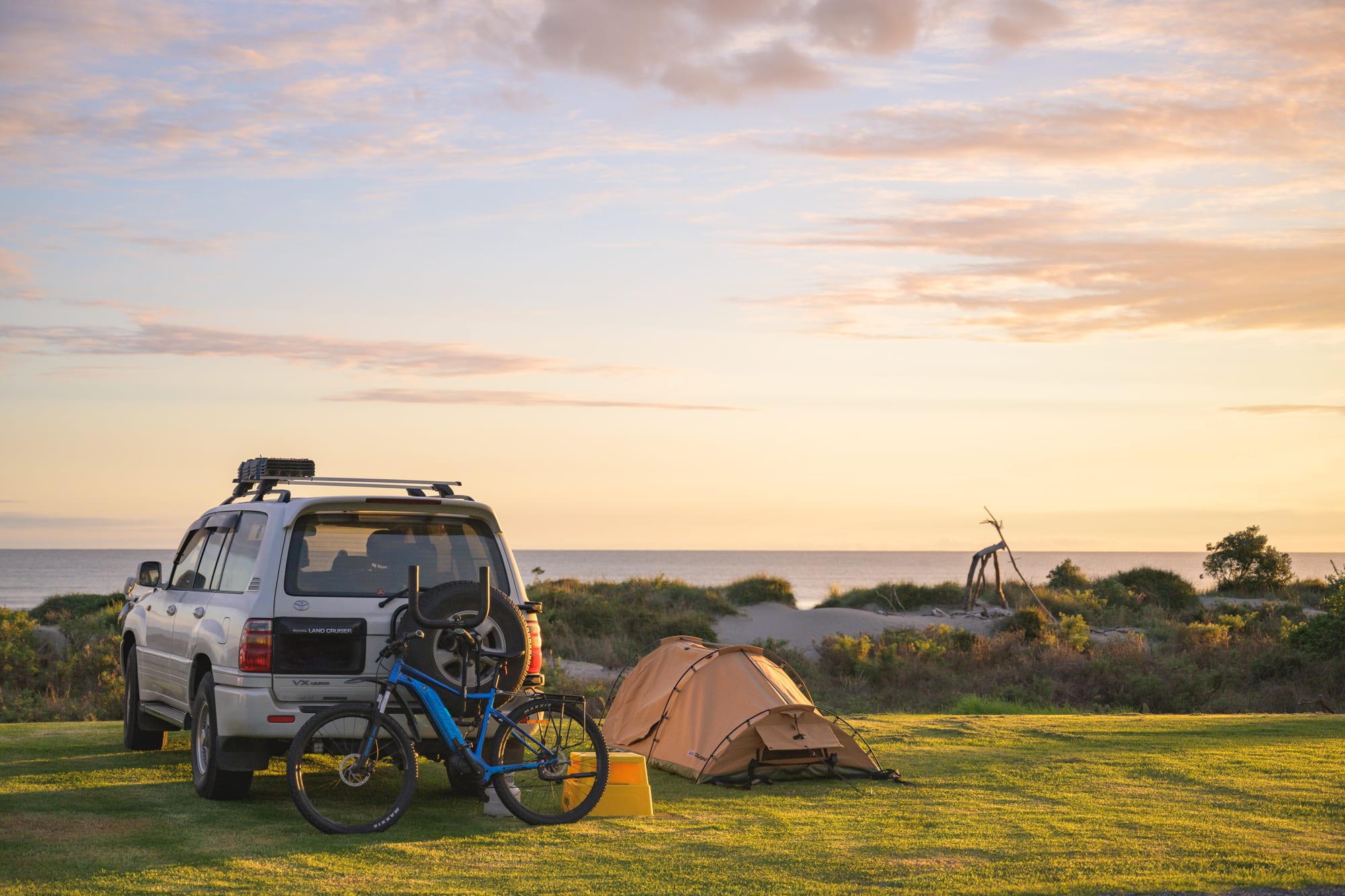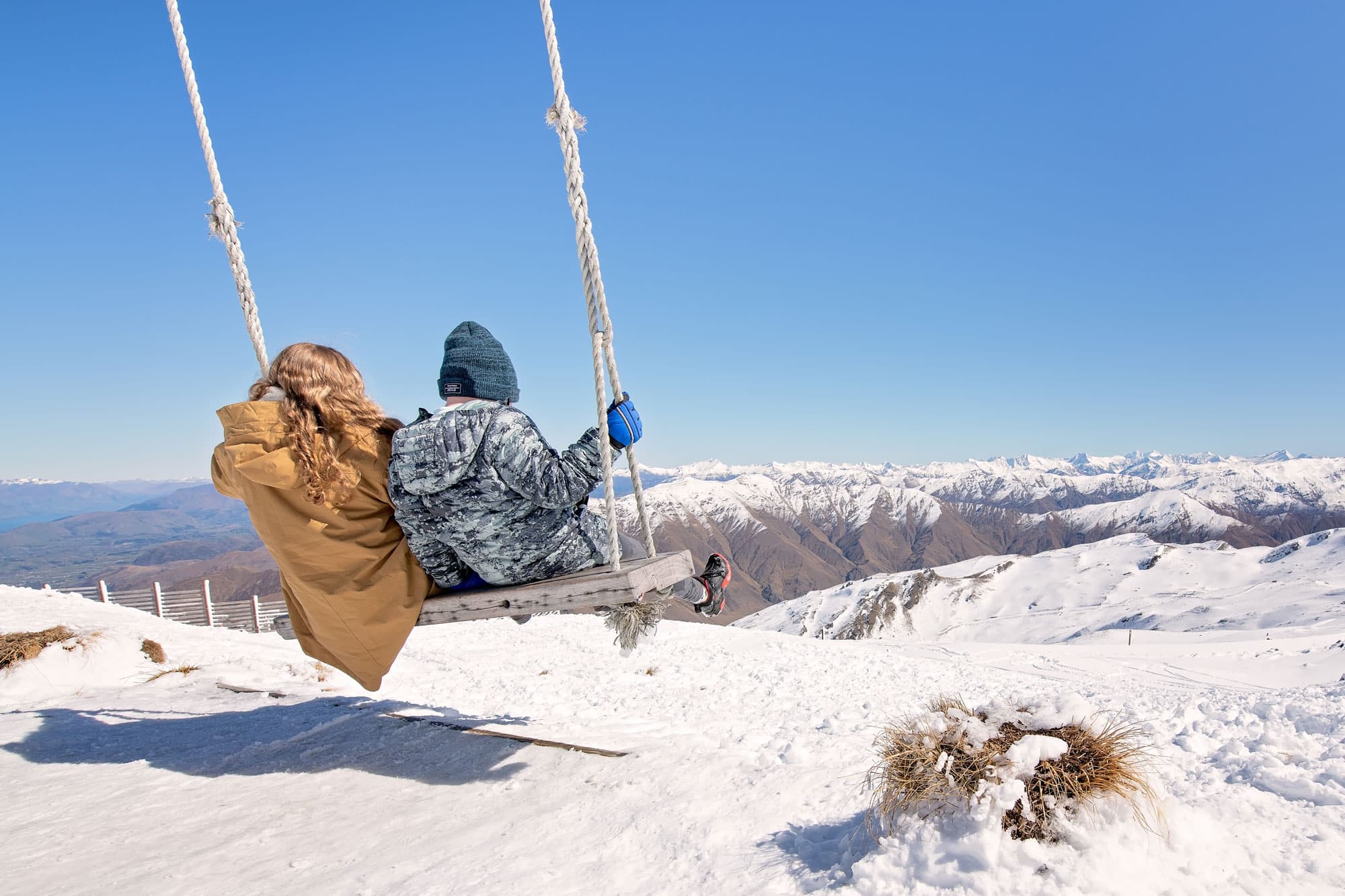When the southern chill sets in and the mist rolls gently over the mountains, there’s magic in the air — and even more above it. In winter, when the nights grow long and crisp, the stars over Aotearoa reveal themselves in their full, unfiltered glory. No haze. No harsh light. Just infinite darkness scattered with ancient light.
Whether you’re a wide-eyed first-timer or a seasoned astrophotographer chasing the Milky Way’s core, winter is your golden window — or rather, your starry canvas.
So bundle up, head for the hills, and get ready to whisper “whoa” under your breath more times than you can count.
Why Winter Stargazing in New Zealand Just Hits Different
Winter is when the heavens come out to play. Between June and August, the air is dry and still, perfect for clarity. Light pollution in Aotearoa’s rural regions is minimal — and let’s face it, we’re spoilt with natural beauty down here. It’s the kind of place where you can boil the billy, tilt your face skyward, and feel utterly insignificant in the best possible way.
Better still, you don’t have to venture into the middle of nowhere. With Hampshire Holiday Parks dotted across stunning low-light locations in the South and North Islands, you’re never far from a galaxy-gazing base camp.
Top Stargazing Locations Near Our Parks (And When to Go)
Arrowtown & Queenstown
The historic gold-rush town of Arrowtown slows to a hush in winter, leaving you with quiet streets, frosty mornings, and outrageously clear skies. Set against the Remarkables and far from big city lights, this alpine spot is ideal for stargazing. Even the drive up to Skippers Canyon or out towards Coronet Peak offers incredible night views — the kind that make you pull over and stare in silence.
Best stargazing months: June to August
Top Spots:
Skippers Canyon – One of the darkest skies in the region, about 30 mins drive from Arrowtown.
Coronet Peak (after hours) – Park near the base station or lookout and soak in panoramic alpine views.
Lake Hayes Reserve – A quiet, flat spot near Arrowtown with reflections on the water and minimal light pollution.
What to see: The Milky Way’s core arcs high by midnight, Saturn rises in July, and the Magellanic Clouds float mysteriously in the southern sky.
Stay: Arrowtown Holiday Park or Queenstown Lakeview Holiday Park
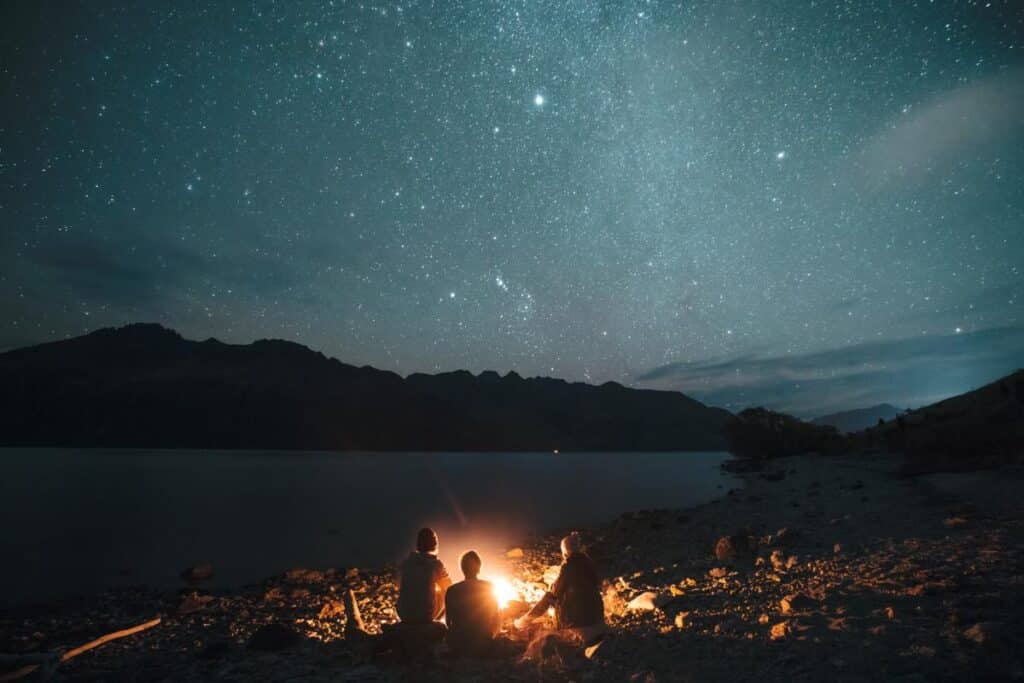
Glendhu Bay, Wānaka
Come winter, Wānaka belongs to the stillness seekers. Glendhu Bay sits peacefully on the lake’s edge, its wide-open skies reflected in glassy waters. Lie back on the lakefront, toast a marshmallow by your cabin’s fire, and watch the stars emerge — first one, then dozens, then thousands.
Best stargazing months: Late June through August
Top spots:
Glendhu Bay Foreshore – Right outside your accommodation, no need to drive.
Mount Aspiring Road pull-ins – A short drive west with minimal roadside lighting
Rippon Vineyard (after hours) – Elevated views over Lake Wānaka with wide open skies
What to see: The Galactic Core of the Milky Way and, during heightened solar activity, a glimpse of the Aurora Australis over the lake’s southern edge.
Stay: Glendhu Bay Holiday Park or Wānaka Holiday Park
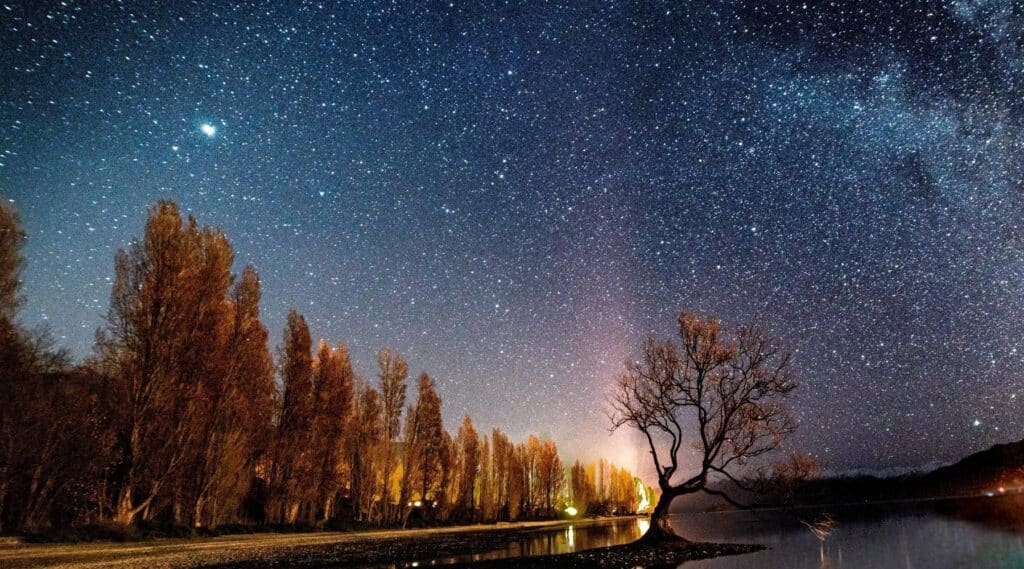
Kaikōura, Canterbury
Kaikōura is best known for whales, but by night it becomes something else entirely. With mountains to the west and ocean to the east, the views are panoramic and uninterrupted. You don’t have to go far to catch a spectacular sky.
Best stargazing months: June to mid-August
Top spots:
Kaikōura Peninsula Walkway (Point Kean carpark) – Wide ocean-facing views and dark skies
South Bay Reserve – Away from town lights with a wide southern horizon
Lavendyl Lavender Farm (after dark) – A peaceful elevated location if you have permission
What to see: The Southern Lights, Southern Cross, and deep-sky clusters.
Stay: Kaikōura TOP10 Holiday Park
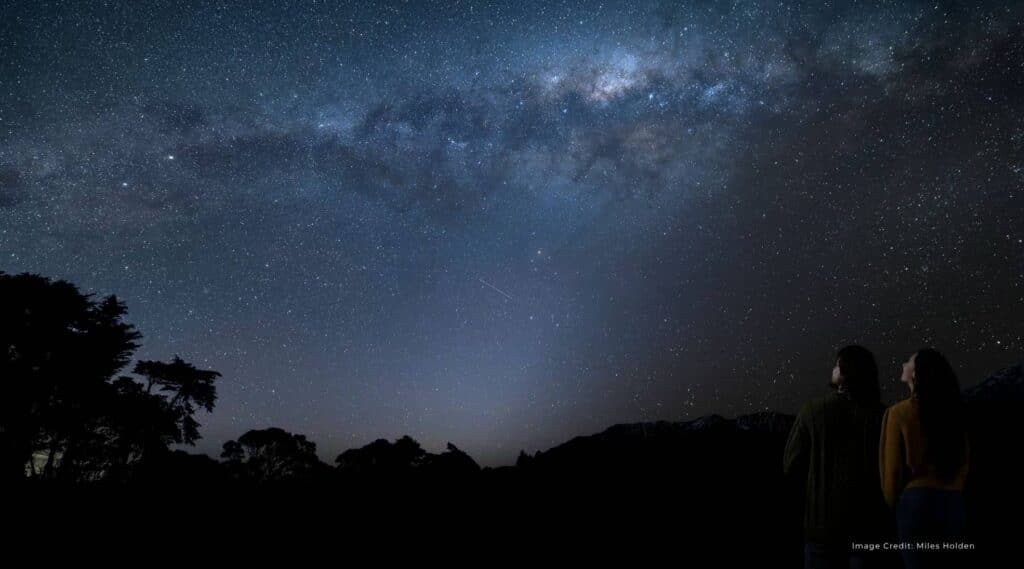
Ōhope Beach
Up north, the coastal skies of Ōhope are less frequented by serious stargazers — but don’t let that fool you. When the crowds are gone and the air is crisp, this East Coast gem offers stunning night skies with the sound of waves in the background and not a streetlight in sight.
Best stargazing months: Late May to July
Top spots:
West End carpark or dunes – Clear ocean-facing skies, shielded from town lights
Otarawairere Bay (via short walk) – Sheltered and remote-feeling with stunning natural surrounds
Ōhiwa Harbour Lookout – Elevated views back over the coast and great for stargazing apps or astro photography
What to see: The rise of Matariki (Pleiades) just before dawn, along with low-horizon views of Orion and the Milky Way.
Stay: Ōhope Beach TOP 10 Holiday Park
Pro Tips for Your Night Under the Stars
– Let your eyes adjust for 15–20 minutes — and keep your phone light off
– Dress like you’re hiking Everest (no one regrets too many layers)
-Use an app like SkyView or Star Walk to navigate the night sky
– Bring a thermos, a chair that reclines, and maybe someone to share the “ooohs” and “ahhhs” with
Bonus: Head out around the new moon each month for the darkest skies
Book Your Starry Stay Now
This winter, don’t just hunker down — head out. Whether you’re toasting marshmallows by the fire, telling tall tales under Orion, or catching your first glimpse of the Southern Lights, the night skies of Aotearoa are calling. And the best part? You don’t need a telescope or an astronomy degree — just a sense of wonder.
👉 Browse our parks and plan your star-filled winter getaway.
